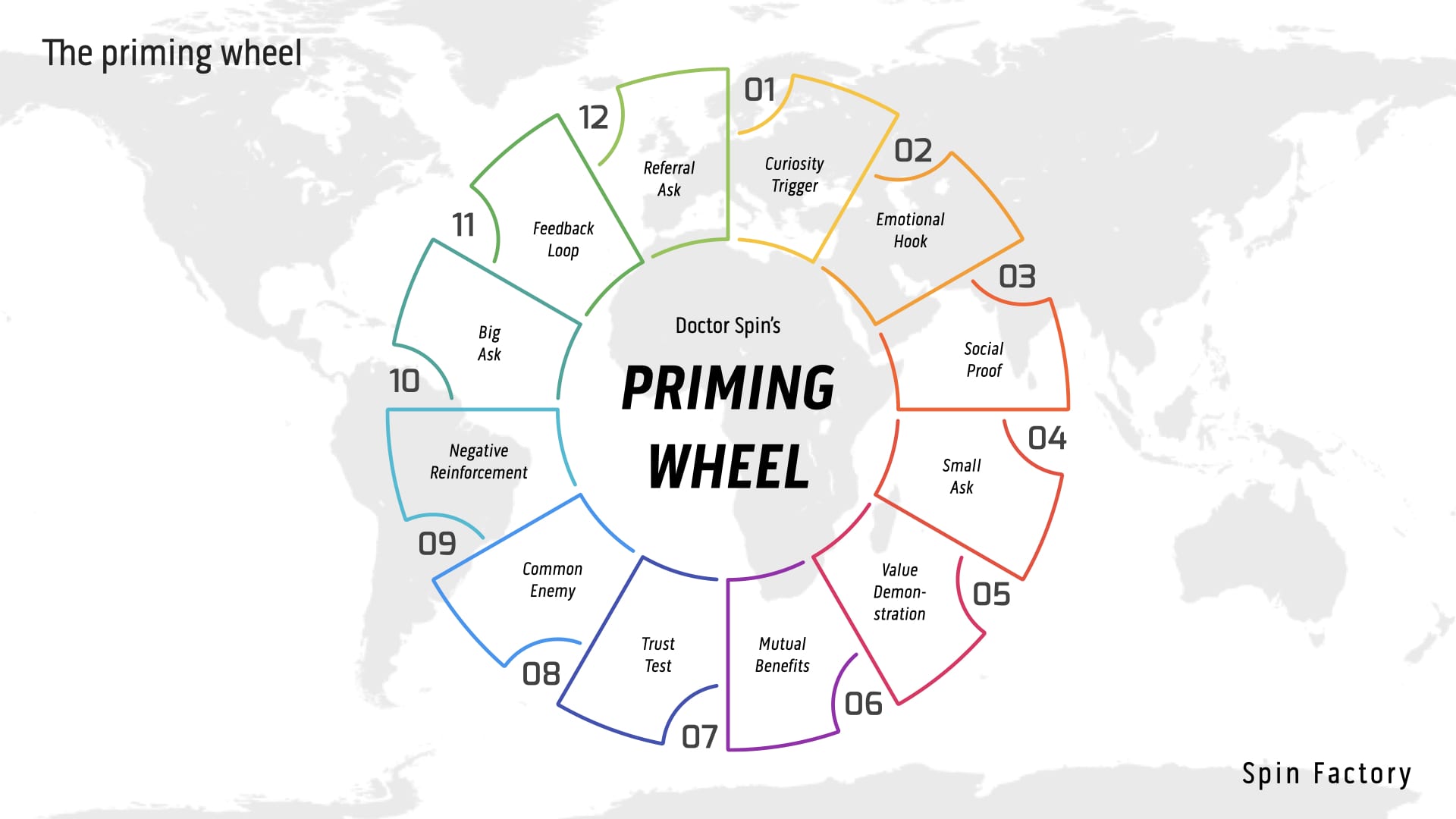Setting up an email autoresponder can be a study in progressive persuasion.
Robert Cialdini wrote:
“The best persuaders become the best through pre-suasion – the process of arranging for recipients to be receptive to a message before they encounter it.”
I’ve studied successful email autoresponder sequences and identified a series of recurring themes. The basic logic is that of priming, making sure that the potential customer is ready to buy when it’s time for you to ask for the sale.
To visualise this, I’ve put together the priming wheel:

Please note that each element of the priming wheel can be bundled with others (depending on how many emails to send) and they can be arranged in a different order to better fit your product/service and your narrative1.
01. Curiosity trigger. Make the email reader take action to know more. Example: Make the reader click something to get started.
02. Emotional hook. Make the email reader identify emotionally with your message. Example: Tell the reader a relatable story.
03. Social proof. Make the email reader less anxious by showcasing third-party success studies. Example: Provide testimonials.
04. Small ask. Make the email reader commit to something that is fairly easy to comply with. Example: Ask the reader to describe their challenge for a reward.
05. Value demonstration. Make the email reader see a clear example of the benefits in action. Example: Visualise the benefits rather than the solution.
06. Mutual benefits. Make the email reader trust the sender more by explaining what’s in it for them as well. Example: Explain why their success is financially important for the sender.
07. Trust test. Make the email reader do something for you to see if they trust you enough. Example: Ask the reader to share something with their network.
08. Common enemy. Make the email reader understand that you’re facing a bigger picture together. Example: Give your enemy a face, a voice, and an appearance.
09. Negative reinforcement. Make the email reader see the consequences of not complying. Example: Demonstrate the worst-case scenario without holding back.
10. Big ask (the sale). Make the email reader understand that the time to buy is now, not later. Example: Put forward the offer with a countdown.
11. Feedback loop. Make the email reader confident about their purchase or decision. Example: Encourage the reader (now customer) and express companionship.
12. Referral ask. Make the email reader know that you respect their opinion and their network. Example: Ask the reader to refer two industry colleagues for a reward.
Photo by Jon Cartagena on Unsplash.

---------------------
- Many brands do one sales email, and then one or two reminders. When I suggest setting up a more sophisticated email autoresponder, a client might ask me, “But how on Earth do we come up with what to write for so many emails?” By showing them the priming wheel, they quickly get the idea and we can get to work.




























